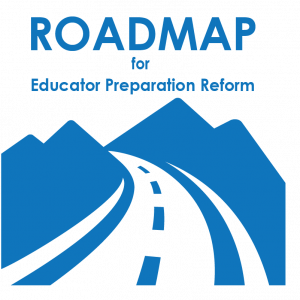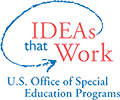
Share this Guide
Step 5: Develop Action Plan

Developing an action plan for program reform creates a blueprint to guide implementation efforts and provides clarity on team roles and responsibilities. A strong action plan lays the foundation for structures to promote accountability and continuous improvement.
Outcomes:
- The workgroup has developed an action plan for program reform, including tasks, outputs, outcomes, and a plan for data collection and progress monitoring.
- The workgroup has secured the necessary resources (e.g., professional development, technical assistance, funding) to support implementation of the action plan.
Steps
Step 5.1 Identify Action Steps for Program Improvement
Guiding Questions
- Have faculty who did not participate on the workgroup had an opportunity to analyze, discuss, and reflect on the findings generated during the program review process?
- What action steps do the data suggest related to:
- Revising the sequence of courses?
- Revising course content to embed evidence-based practices and frameworks?
- Increasing the frequency and quality of practice-based opportunities within clinical experiences?
- Developing blended or dual-certification programs?
- Strengthening partnerships with local districts?
- Who will guide and monitor the action plan? Will EPP leaders have a role in implementing and monitoring the action plan? What is the role of the broader faculty in sharing ownership for the action plan?
- Has the workgroup distributed responsibility for completing the tasks within the action plan, involving other faculty as appropriate?
Step 5.2 Secure Resources to Support Program Improvement
Guiding Questions
- What research-based resources (e.g., CEEDAR Center Course Enhancement Modules and IRIS professional learning modules) will be used for course and program enhancement? How will these resources be used?
- How will faculty share resources and collaborate to ensure consistency of improvement efforts within and across programs?
- How can faculty engage with other EPPs within the state or nationally to share resources, syllabi, course materials, and program requirements?
- What support can be provided to faculty to help them see the connections between program improvement tasks identified in the action plan and their existing responsibilities? For example, will any of the program reform and continuous improvement efforts help with work that already must be done for program approval and/or accreditation?
Step 5.3 Specify Outputs and Outcomes
Guiding Questions
- What are the short-, intermediate-, and long-term outcomes that should be included in the action plan? What data will be collected to measure these outcomes? How will existing sources of data be leveraged to collect this information?
- How does the EPP plan to assess whether program improvements result in:
- Improved alignment of courses to evidence-based practices and frameworks?
- Improved capacity of faculty?
- Improved candidate competence in the use of evidence-based practices and frameworks?
- How will data on short- and intermediate-term outcomes (e.g., changes in teacher knowledge and skill, changes in instructional practice) be collected to determine if reforms are on the right track for more distal outcomes, such as student achievement?
- Will syllabi and course revisions be included as part of an output measurement?
- How can candidate performance be measured to demonstrate if improvement efforts have resulted in increased candidate capacity to implement HLPs/EPBs with fidelity (e.g., pre- and post-assessments of candidates during and after reforms, graduate completer surveys, examination of improvements in edTPA scores)?
- How will training and coaching support for teacher candidates be measured?
Step 5.4 Develop a Progress Monitoring and Data Collection Plan
Guiding Questions
- What data will be collected to guide continuous improvement efforts? How will these data be collected?
- How frequently will progress toward outcomes be monitored? What data will be shared, and how will stakeholders be kept informed?
- How will stakeholders within the EPP collaboratively analyze data to inform continuous improvement? How often will this occur? Who should take part in analyzing the data?
Resources

Active Implementation:
- Installation Stage: Describes what needs to happen at an EPP to get the plan ready to implement the reform.
- Practice Profiles: Defines the core components of a plan for EPP reform.
Other
- CCSSO’s “Working Better Together”: Strengthens partnerships between LEAs and EPPs. The tool guides partners, or potential partners, through a series of criteria, probing questions, and a continuum of effectiveness levels.
Examples
- The Michigan state leadership team—in collaboration with Michigan’s Integrated Behavior and Learning Support Initiative (MIBLSI)—worked with teams to leverage funding to promote and sustain implementation efforts. This included three primary steps: (a) evaluating new funding opportunities, (b) leveraging funding based on the implementation stage, and (c) developing strategies to ensure continued funding. Specific strategies to leverage or ensure continued funding include communicating with key stakeholders, focusing on outcomes, and demonstrating deliverables/outcomes. MIBLSI established a document that describes its value-add across important, state-based initiatives that can be used to identify and sustain funding sources for preparation reform.


